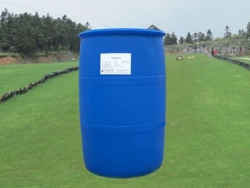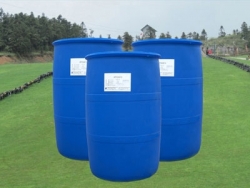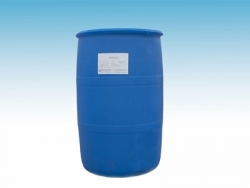The carbon-carbon single bond of polymer surfactants can rotate freely under general conditions. The bond angle of the carbon-carbon single bond of the main bond is approximately 109 28', and the degree of polymerization is generally large, that is, the main chain is quite long. Therefore, in the medium, the main chain is not straight, twenty-bending and curling. Curled linear molecules with multiple negative charges are adsorbed by solid particles at several parts of the molecular main chain, as if bridging between these solid particles. This process of relatively aggregating solid particles is called the adsorption bridging between polymer flocculants and solids. _

Solid suspended matter in oilfield water can be removed by flocculant. The substance that can make the solid suspended matter in water form flocculant precipitation is called flocculant. The suspended solids in water are mainly suspended particles with negative charges on the surface. Their mutual repulsion makes them difficult to coalesce and sink. The flocculant can neutralize the negative electricity on the surface of suspended particles, or cause the electroless particles to coalesce and sink rapidly.

Amphoteric polymer flocculants have both anionic and cationic groups on the same polymer chain. Under different medium conditions, the type of ions it carries may be different, and it is suitable for treating pollutants with different charges. Its other advantage is that it can be used in a wide range of acidic and alkaline media. It has good flocculation and sludge dewatering effects on dispersions, emulsions, sludges and colloidal dispersions stabilized by anionic surfactants in wastewater. _

Anionic polyacrylamide (PAM) is soluble in water and almost insoluble in organic solvents. It is characterized by high polymer electrolyte in neutral and alkaline media. It is sensitive to salt electrolytes and can cross-link with high valence metal ions to form insoluble gels. Anionic PAM is used as flocculant for solid-liquid separation in mineral processing, metallurgy, coal washing and food industry. As a flocculant, it is widely used in oilfields. The general dosage is 1-10_mg/L. It can also be used with aluminium salt, and the effect is better. Different types of A-PAM_should be used for water suspension of different suspended solid particles. The main purpose of this kind of suspension in oilfields is to be used as water injection thickener for tertiary oil recovery.
Non-ionic polyacrylamide (NPAM) bridges by adsorbing many small particles or oil droplets in sewage through long chains of its polymers. It is a kind of flocculant with very strong flocculation ability, and its flocculation speed is faster than that of anionic PAM. Aluminum salts are usually used in oily wastewater treatment in oilfields. Before use, the best dosage should be determined through experiments. The dosage is too low, ineffective, and the dosage is too high, but it has a negative effect. This is because over a certain concentration, PAM not only does not play a role in flocculation, but also plays a role in dispersion and stabilization. Lower concentration should be used to ensure uniform mixing. As a highly selective flocculant, non-ionic PAM is used in low-solid drilling mud using bentonite because it can flocculate debris under drilling and keep bentonite dispersed.